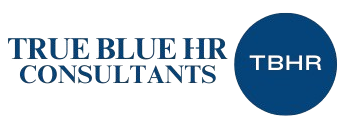
In today’s dynamic work environment, organizations are witnessing a significant generational shift in the workplace. With five distinct generations coexisting—Baby Boomers, Gen X, Millennials, Gen Z and the emerging Alpha Generation—the workplace is becoming a mosaic of diverse perspectives, work ethics, values and expectations. This shift presents unique challenges and opportunities for leaders and HR professionals who must manage, motivate and create an inclusive environment for employees across generations.
Understanding how to navigate this generational shift is key to fostering collaboration, innovation, and retaining top talent. Let’s explore the impact of generational differences on the workplace and provide actionable strategies for managing these diverse teams effectively.
Understanding the Generations
Before we explore how to navigate generational shifts, it’s important to understand the characteristics, expectations and motivations of each generation in the workforce:
- Baby Boomers (Born 1946-1964)
Baby Boomers have witnessed significant social, political and technological changes. Known for their strong work ethic, loyalty and discipline they are often characterized by a preference for hierarchical work structures and face-to-face communication. Many Baby Boomers are nearing retirement but still remain valuable assets with a wealth of experience and knowledge.
- Generation X (Born 1965-1980)
Gen Xers are often described as independent, resourceful and sceptical. They are the first generation to embrace technology in the workplace and have adapted to both the analog and digital worlds. Gen X is known for being adaptable and are more comfortable with work-life balance compared to previous generations, making them key players in shaping flexible workplace policies.
- Millennials (Born 1981-1996)
Millennials, or Gen Y are digital natives who grew up with technology. They value work-life balance, purpose-driven work and constant feedback. They are known for their collaboration skills, desire for professional growth and preference for flexible work arrangements. Millennials seek transparency and are motivated by meaningful work that aligns with their personal values.
- Generation Z (Born 1997-2012)
Gen Z is the first generation to grow up fully immersed in the digital world, with social media, smartphones and instant communication shaping their worldview. Gen Z is entrepreneurial, tech-savvy, and values inclusivity and social justice. They tend to be pragmatic, financially cautious and highly motivated by personal development and career advancement.
- Generation Alpha (Born 2013 and onwards)
Generation Alpha is just beginning to enter the workforce, and while it is still early to define their work characteristics, early indicators show they will be even more tech-dependent and globally connected. As digital natives, they will likely expect highly customized, technology-driven work environments.
Challenges of a Multi-Generational Workforce
With such diverse characteristics and expectations, a multi-generational workforce can face several challenges:
- Communication Styles
Generations prefer different communication channels. Baby Boomers and Gen X often value face-to-face interactions and emails, while Millennials and Gen Z gravitate toward instant messaging and collaborative tools. Miscommunication can arise if leaders fail to accommodate these preferences, leading to frustration and inefficiency.
- Differing Work Styles
Work styles across generations vary widely. For example, Baby Boomers are more accustomed to a structured, 9-to-5 work schedule, while Millennials and Gen Z prefer flexibility in when and where they work. This divergence can create tension when organizations fail to provide flexibility that appeals to younger employees.
- Technology Gap
While Baby Boomers and Gen X may prefer traditional tools and methods, Millennials and Gen Z are more likely to embrace new technologies. This technological gap can lead to differences in how tasks are completed, with younger generations leveraging automation, cloud computing and digital platforms, while older generations may rely on more conventional methods.
- Retention and Career Advancement
Each generation has distinct expectations regarding career progression. Baby Boomers tend to stay longer in their roles, while Millennials and Gen Z are more likely to seek out new opportunities if their career growth feels stagnant. Organizations that fail to provide adequate learning and development opportunities risk higher turnover, especially among younger employees.
Strategies for Navigating the Generational Shift
While the challenges are evident, organizations can turn these generational differences into a strategic advantage by adopting inclusive practices and policies that foster collaboration, innovation and mutual respect.
- Foster Intergenerational Mentoring
One of the most effective ways to bridge the generational gap is through mentorship programs. Senior employees, such as Baby Boomers and Gen Xers can share their wealth of experience while younger employees—particularly Millennials and Gen Z—can introduce fresh perspectives and technological skills. Creating a structured mentorship program helps to transfer knowledge, builds trust across generational lines and ensures that all employees feel valued and engaged.
Action Tip: Implement a reverse mentoring program, where younger employees mentor older ones on new technologies and trends.
- Encourage Open Communication
Open communication is essential for creating a culture where employees of all ages feel heard and respected. Leaders should encourage dialogue about expectations, preferred work styles and career goals. This can help prevent misunderstandings and foster a more collaborative environment. Additionally, leaders should actively listen to employees from all generations to understand their concerns and desires.
Action Tip: Conduct regular feedback sessions to understand the needs and preferences of different generations and ensure that policies and practices align with those expectations.
In today’s dynamic work environment, organizations are witnessing a significant generational shift in the workplace. With five distinct generations coexisting—Baby Boomers, Gen X, Millennials, Gen Z and the emerging Alpha Generation—the workplace is becoming a mosaic of diverse perspectives, work ethics, values and expectations. This shift presents unique challenges and opportunities for leaders and HR professionals who must manage, motivate and create an inclusive environment for employees across generations.
Understanding how to navigate this generational shift is key to fostering collaboration, innovation, and retaining top talent. Let’s explore the impact of generational differences on the workplace and provide actionable strategies for managing these diverse teams effectively.
Understanding the Generations
Before we explore how to navigate generational shifts, it’s important to understand the characteristics, expectations and motivations of each generation in the workforce:
- Baby Boomers (Born 1946-1964)
Baby Boomers have witnessed significant social, political and technological changes. Known for their strong work ethic, loyalty and discipline they are often characterized by a preference for hierarchical work structures and face-to-face communication. Many Baby Boomers are nearing retirement but still remain valuable assets with a wealth of experience and knowledge.
- Generation X (Born 1965-1980)
Gen Xers are often described as independent, resourceful and sceptical. They are the first generation to embrace technology in the workplace and have adapted to both the analog and digital worlds. Gen X is known for being adaptable and are more comfortable with work-life balance compared to previous generations, making them key players in shaping flexible workplace policies.
- Millennials (Born 1981-1996)
Millennials, or Gen Y are digital natives who grew up with technology. They value work-life balance, purpose-driven work and constant feedback. They are known for their collaboration skills, desire for professional growth and preference for flexible work arrangements. Millennials seek transparency and are motivated by meaningful work that aligns with their personal values.
- Generation Z (Born 1997-2012)
Gen Z is the first generation to grow up fully immersed in the digital world, with social media, smartphones and instant communication shaping their worldview. Gen Z is entrepreneurial, tech-savvy, and values inclusivity and social justice. They tend to be pragmatic, financially cautious and highly motivated by personal development and career advancement.
- Generation Alpha (Born 2013 and onwards)
Generation Alpha is just beginning to enter the workforce, and while it is still early to define their work characteristics, early indicators show they will be even more tech-dependent and globally connected. As digital natives, they will likely expect highly customized, technology-driven work environments.
Challenges of a Multi-Generational Workforce
With such diverse characteristics and expectations, a multi-generational workforce can face several challenges:
- Communication Styles
Generations prefer different communication channels. Baby Boomers and Gen X often value face-to-face interactions and emails, while Millennials and Gen Z gravitate toward instant messaging and collaborative tools. Miscommunication can arise if leaders fail to accommodate these preferences, leading to frustration and inefficiency.
- Differing Work Styles
Work styles across generations vary widely. For example, Baby Boomers are more accustomed to a structured, 9-to-5 work schedule, while Millennials and Gen Z prefer flexibility in when and where they work. This divergence can create tension when organizations fail to provide flexibility that appeals to younger employees.
- Technology Gap
While Baby Boomers and Gen X may prefer traditional tools and methods, Millennials and Gen Z are more likely to embrace new technologies. This technological gap can lead to differences in how tasks are completed, with younger generations leveraging automation, cloud computing and digital platforms, while older generations may rely on more conventional methods.
- Retention and Career Advancement
Each generation has distinct expectations regarding career progression. Baby Boomers tend to stay longer in their roles, while Millennials and Gen Z are more likely to seek out new opportunities if their career growth feels stagnant. Organizations that fail to provide adequate learning and development opportunities risk higher turnover, especially among younger employees.
Strategies for Navigating the Generational Shift
While the challenges are evident, organizations can turn these generational differences into a strategic advantage by adopting inclusive practices and policies that foster collaboration, innovation and mutual respect.
- Foster Intergenerational Mentoring
One of the most effective ways to bridge the generational gap is through mentorship programs. Senior employees, such as Baby Boomers and Gen Xers can share their wealth of experience while younger employees—particularly Millennials and Gen Z—can introduce fresh perspectives and technological skills. Creating a structured mentorship program helps to transfer knowledge, builds trust across generational lines and ensures that all employees feel valued and engaged.
Action Tip: Implement a reverse mentoring program, where younger employees mentor older ones on new technologies and trends.
- Encourage Open Communication
Open communication is essential for creating a culture where employees of all ages feel heard and respected. Leaders should encourage dialogue about expectations, preferred work styles and career goals. This can help prevent misunderstandings and foster a more collaborative environment. Additionally, leaders should actively listen to employees from all generations to understand their concerns and desires.
Action Tip: Conduct regular feedback sessions to understand the needs and preferences of different generations and ensure that policies and practices align with those expectations.
- Leverage Technology for Collaboration
While the technological divide can be a challenge, it also presents an opportunity to enhance productivity and collaboration. Embrace digital tools that can streamline communication, project management and workflow. Younger generations may be more familiar with these tools, but providing training for older employees ensures that everyone is on the same page. Virtual collaboration tools like Slack, Microsoft Teams or Asana can help break down communication barriers and encourage cross-generational collaboration.
Action Tip: Offer training sessions for employees across all generations to enhance their technological literacy and improve workplace efficiency.
- Offer Flexible Work Arrangements
As work-life balance becomes increasingly important to younger generations, offering flexible work policies can attract and retain top talent. Flexibility in terms of work hours, remote work and hybrid arrangements will appeal to Millennials and Gen Z. However, it’s important to ensure that this flexibility is not seen as a lack of structure by older employees, especially Baby Boomers.
Action Tip: Create a flexible work policy that caters to different generational preferences, balancing the needs for structure and autonomy.
- Create a Culture of Inclusion and Respect
Respecting and valuing the diverse perspectives of all generations is key to creating an inclusive work environment. Leaders must emphasize the importance of diversity in both hiring practices and team dynamics. This involves recognizing the strengths of each generation—whether it’s the seasoned experience of Baby Boomers, the adaptability of Gen X, the innovation of Millennials, or the digital fluency of Gen Z.
Action Tip: Provide regular diversity and inclusion training that focuses on generational diversity and fosters mutual respect across age groups.
- Provide Tailored Professional Development Opportunities
Each generation has unique professional development needs. For Baby Boomers and Gen Xers, this might include leadership and succession planning opportunities, while Millennials and Gen Z may be more focused on skills development, continuous learning and career advancement. Organizations should offer tailored development programs that address these varied needs.
Action Tip: Offer both leadership training for experienced employees and skills development workshops for younger generations.
Conclusion
Navigating the generational shift in the workplace requires a proactive approach that embraces diversity, fosters communication and encourages collaboration across all generations. By implementing strategies such as intergenerational mentoring, leveraging technology, offering flexible work arrangements and creating an inclusive culture, organizations can turn the generational divide into a strategic advantage.
At True Blue HR Consultants, we specialize in helping organizations understand these generational dynamics and design tailored HR solutions that promote a harmonious and productive work environment. By investing in strategies that respect and utilize the strengths of each generation, businesses can build more resilient teams that are capable of driving long-term success.
-
Previous Post
The Role of HR Consulting in Shaping Workplace Culture
Post a comment Cancel reply
Related Posts
Why Have a Team If You’re Going to Micromanage?
A team exists to share the workload and make the most of everyone’s unique strengths.…
Future of Work: How HR Can Adapt to the Rise of Remote and Hybrid Models
The world of work has changed dramatically in recent years, with the rise of remote…
The Impact of AI on HR: Are We Ready for the Change?
Artificial Intelligence (AI) is transforming industries across the globe, and Human Resources (HR) is no…
5 Key Strategies to Attract and Retain Top Talent in 2024
The talent market is becoming increasingly competitive, especially as businesses evolve to meet the challenges…









